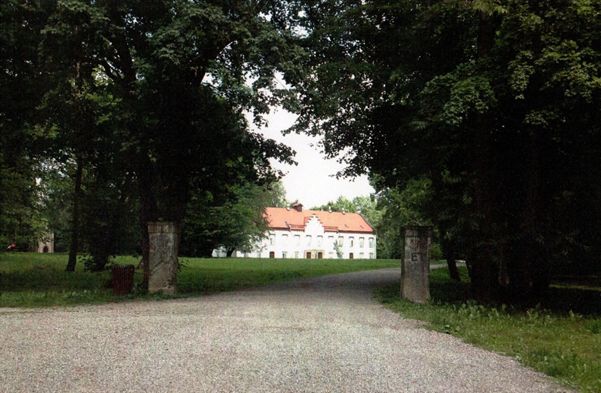Rendez-vous in the gardens / Rendez-vous aux jardins (1– 3 June 2018)
The event Rendez-vous aux jardins / Rendez-vous in the gardens is being organised by the French Ministry of Culture since 2003 every first weekend in June when various private and public gardens and parks across France are being opened to the public. According to the programme educational tours for children are organised on Friday, while Saturday and Sunday are reserved for visits by the general public.
This year the French Ministry of Culture has invited other interested countries to join this initiative to be held on the theme of "Europe of the Gardens" in the framework of the marking of the European Year of Cultural Heritage 2018.
The Republic of Croatia has responded to the invitation of the Republic of France by including the following Croatian gardens/parks with supporting programmes:
- Park of Villa Angiolina in Opatija
Friday, 1 June 2018
9:00 h
Workshop for the children of the „Rikard Katalinić Jeretov“ Elementary school in Opatija: "Designing a recognizable Opatija umbrella, raincoat or rain boots"
10:00 h
Symposium on „How to successfully maintain and use the "Angiolina" Park and save it for the future?“
Saturday, 2 June 2018
10:00 h
Tour for the visitors of the Villa Angiolina Park in the company of Head of maintenance of horticultural areas in the city company “Parkovi Opatija”, Mr. Eng. Hort. Hermina Brajković and landscape architect Mr. Sc. Agr. Dobrila Kraljić
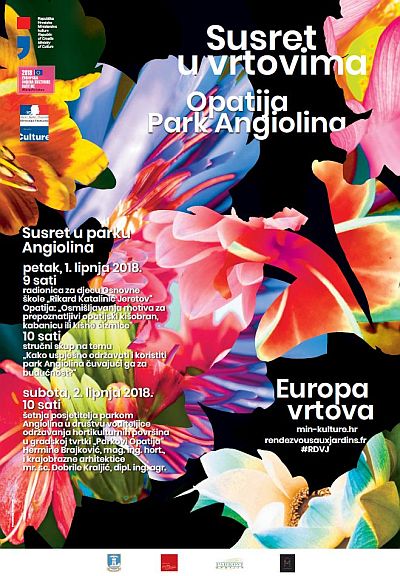
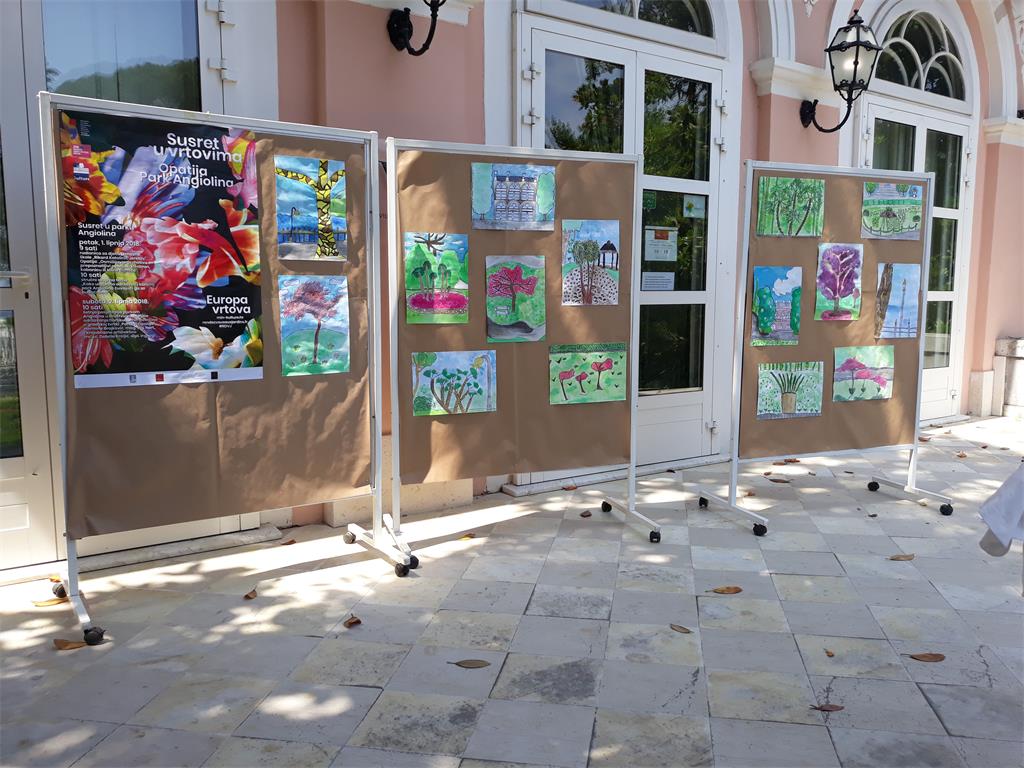


9:00 h
Workshop for the children of the „Rikard Katalinić Jeretov“ Elementary school in Opatija: "Designing a recognizable Opatija umbrella, raincoat or rain boots"
10:00 h
Symposium on „How to successfully maintain and use the "Angiolina" Park and save it for the future?“
Saturday, 2 June 2018
10:00 h
Tour for the visitors of the Villa Angiolina Park in the company of Head of maintenance of horticultural areas in the city company “Parkovi Opatija”, Mr. Eng. Hort. Hermina Brajković and landscape architect Mr. Sc. Agr. Dobrila Kraljić




- Gardens of the Lipik Health Resort
Friday, 1 June 2018
14:30 h
Lecture “Historic Development of the Gardens and Health Resort in Lipik“


14:30 h
Lecture “Historic Development of the Gardens and Health Resort in Lipik“


- The gardens of Novi dvori zaprešićki
Saturday, 2 June 2018
10:00 h
Lecture „History of the gardens formation in the context of 19th century tendencies“, in the threshing facility
11:00 h
Presentation of the project of the gardens design, in the threshing facility
12:00 h
Tour of the gardens with a professional guide
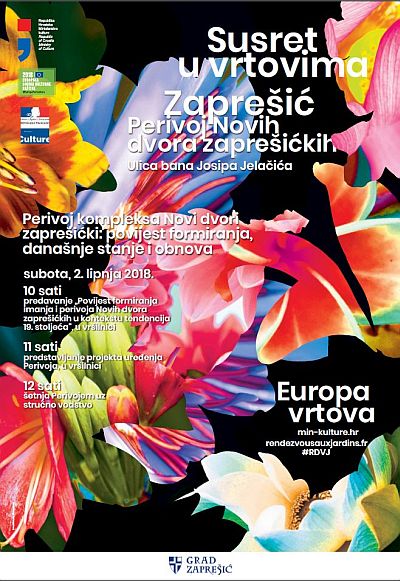
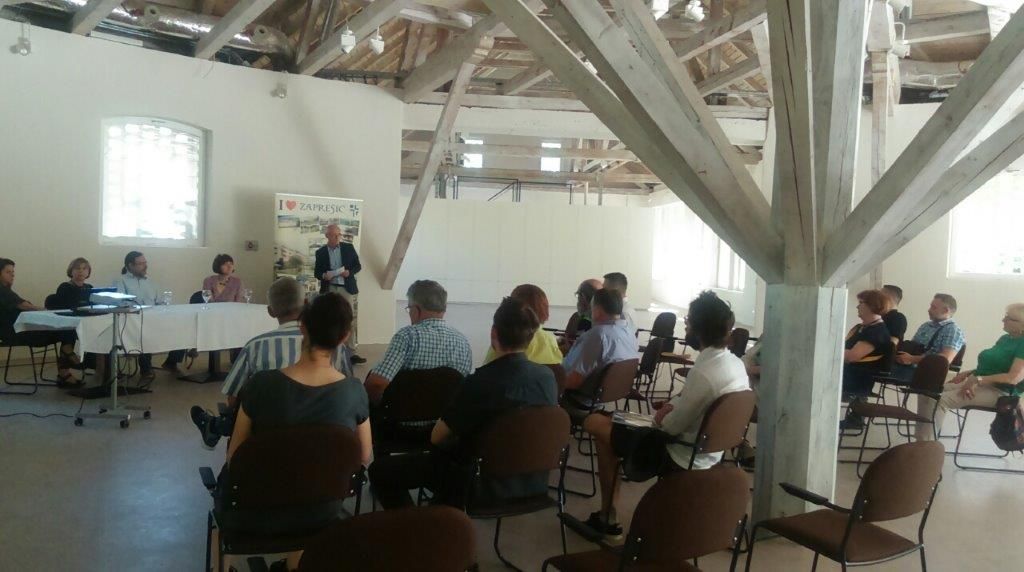
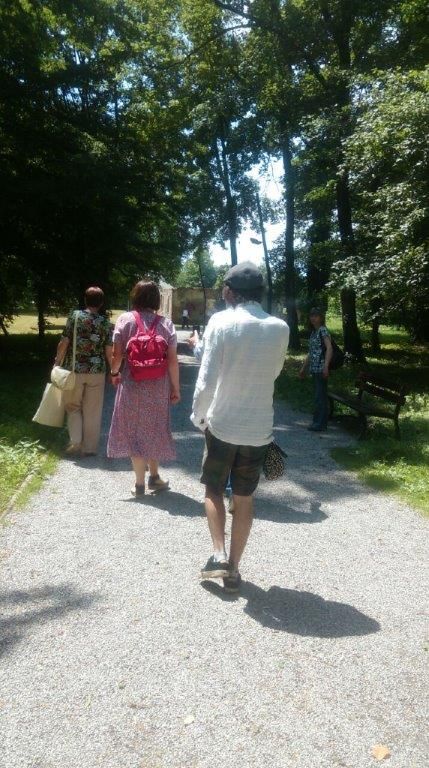
10:00 h
Lecture „History of the gardens formation in the context of 19th century tendencies“, in the threshing facility
11:00 h
Presentation of the project of the gardens design, in the threshing facility
12:00 h
Tour of the gardens with a professional guide



- Ironworks Sculpture Park in Caprag in Sisak created in the framework of the Sisak Ironworks Art Colony
Friday, 1 June 2018
10:00 h
Tour to familiarise with the sculptures, flora and fauna in the Sisak Ironworks Sculpture Park
11:00 h
Workshops for pre-school and school children
Open Door Day of the Garden of Senses of Sisak Novi kindergarten
Saturday, 2 June 2018
10:00 h
Presentation of art works created in the workshops
Professional tour through the Sculpture Park to familiarise with fauna and flora biological diversities in urban areas
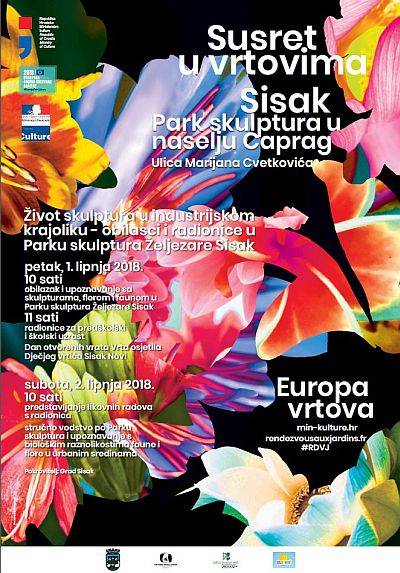
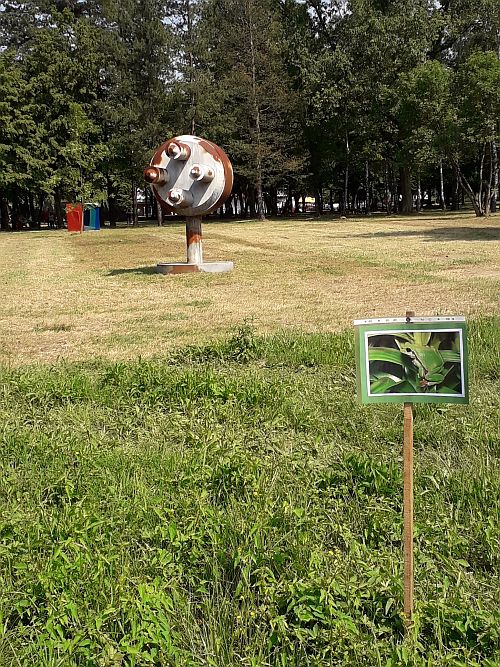

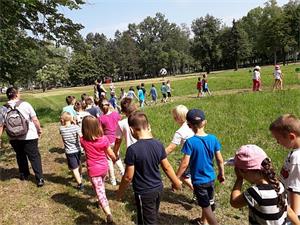
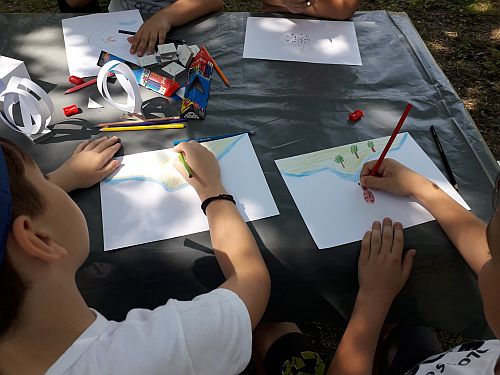
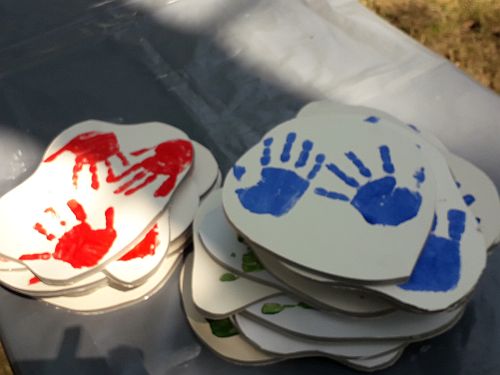
10:00 h
Tour to familiarise with the sculptures, flora and fauna in the Sisak Ironworks Sculpture Park
11:00 h
Workshops for pre-school and school children
Open Door Day of the Garden of Senses of Sisak Novi kindergarten
Saturday, 2 June 2018
10:00 h
Presentation of art works created in the workshops
Professional tour through the Sculpture Park to familiarise with fauna and flora biological diversities in urban areas






These events aim at encouraging citizens to pay more attention to the space around them, to the close connection between people and nature and to enjoy the beauty of designed gardens and parks.
Please read more about the European programme Encounter in the gardens at the following link http://rendezvousauxjardins.culturecommunication.gouv.fr/
:::
Gardens of the Lipik Health Resort
In Lipik, in the northern part of the gardens, at the Izvor pavilion, a lecture will be held on 1 June 2018, at 14:30, on the historic development of the gardens and health resort in Lipik.
The settlement developed around the sources of thermo-mineral water known since the Roman times. A record by Ivan Kapistran of 1517 mentions the healing properties of the Lipik springs water. In 1760 Empress Maria Theresa donated this property to the Janković Counts family that owned it for over a hundred years and had great significance in the development and arrangement of the Lipik baths and gardens. At the time of the first measurement of water temperature in 1782 there were the General, the Count’s, the Lady’s and the Episcopal Bath. Quella was built in 1830. The first quantitative water analysis was carried out in 1839 by Wagner. At that time, the park started to be set up by the bathing facility. In 1867 Vukovar nobleman and wood trader Antun Knoll became the owner and was arranging the spa and the gardens. In 1869 engineer Zsigmondy executed the drilling of a 234m artesian well getting drinking mineral water of 64⁰C and the Izvor pavilion was built. In 1870 the Mud and Stone baths (Blatne and Kamene kupke) were built, and hotel Garni (Kurhotel) and Dependence were built in 1872. Already by end 19th century the Lipik spa became a popular European health resort. In 1885, they became the property of Budapest doctors Deutsch and Schwimer, who continued arranging it. They build the Roman and Marble baths (Rimske i Mramorne kupke) and adapted the others. In 1893/1894 they expanded the health resort and built Wandelbahn, Kursalon and other bathing facilities, creating representative gardens. The urban ensemble of bathing facilities forms a space within which neo-baroque gardens are shaped, characterised by geometrical spatial organization and trimmed forms. The gardens south of Kursalon were conceived in a romanticist landscape style, while southwest of the Kursalon there was a small lake with an islet, often part of 19th century romanticist poetry, the picture being completed by numerous ornaments and details such as stone benches, gazebos and trimmed shrubbery walkways, pergolas and flower mats. The map of the gardens dated end 19th century points to the exceptional composition of the spas urban complex, emblazoned by harmonious relations between forest and meadow surfaces, a group of trees, an imaginatively guided walkway and numerous garden facilities. At the exhibition in Budapest end 19th century they were proclaimed the best decorated gardens in the Austro-Hungarian Monarchy
This lecture aims at raising public awareness on the space surrounding us, the interconnection of people and nature and the beauty of the gardens.
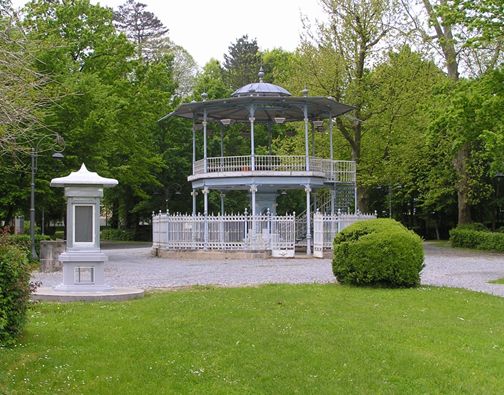
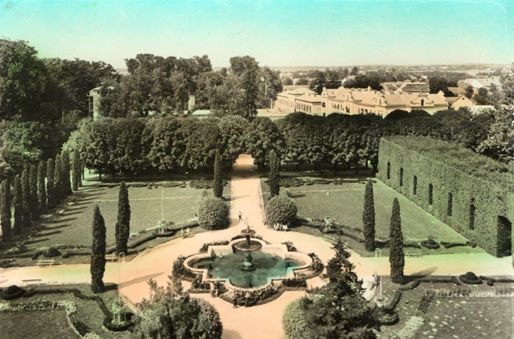
Sculpture Park in Caprag in the city of Sisak created in the framework of the Sisak Ironworks Art Colony
The Sisak Ironworks Sculpture Park is located in the city of Sisak in Croatia. The park areas were methodically designed when building the settlement along the then Sisak Ironworks factory and are part of the industrial landscape. The park also had an ecological function of protecting the settlement against industrial pollution and of creating a pleasant living space for workers. 38 metal sculptures were installed in the park in the framework of the “Sisak Ironworks" Art Colony from 1971 to 1990. The group of sculptures placed throughout the Sisak Ironworks Park is a protected cultural good registered in the Register of Cultural Goods of the Republic of Croatia. The authors of the sculptures are academic sculptors from Croatia and former Yugoslavia. The sculptures are methodically placed on the green surfaces between the today extinct Sisak Ironworks plants and on public areas in the residential settlement built by the Ironworks for their workers. The main material of which all the sculptures are made is metal, often combined with industrially manufactured metal objects (pipes, metal plates, machinery parts) created in the authentic Sisak Ironworks. The sculpture park created in the scope of the Sisak Ironworks Art Colony represents a valuable example of integral industrial heritage, which encompasses the urbanistic ensemble of the factory complex, the residential settlement and the parks. It represents a significant example of interaction between artwork, industrial landscape and public space, creating a sculpture park unique in Croatia. The sculpture park has artistic, historical and urban value.
The event “Tours and workshops in the Sisak Ironworks Sculpture Park” includes activities related to the presentation of natural and cultural heritage in the industrial landscape of the city of Sisak in Croatia. Guided tours of the Sisak City Museum will be organized in the park for children of preschool and school age and the interested wider public aimed at acquainting them with the sculptures in the park. Through a walk through the Park a program of restoration of some sculptures will be presented and art workshops will be organized. The tours will also include a visit to the Garden of Senses within the Sisak Novi Children's kindergarten located in the Park. The institution for natural resources management of the Sisak-Moslavina County will organize lectures and field workshops in the park for elementary school pupils and other visitor groups on the topic of fauna and flora biodiversity in urban areas, the importance of preserving the natural component and landscape, behaviour in contact with wild animals and a presentation of the preserved complex of lowland foal oak forest in which the sculpture park is located. The program takes place under the auspices of the City of Sisak. The aim is to raise public awareness of the area around us, the connection between people and nature and the beauty of the parks.
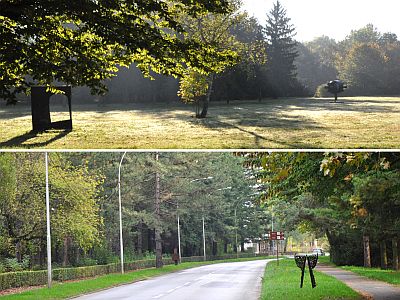
Park of villa Angiolina in Opatija
„Let's meet in Angiolina” is designed as a two-day event in the oldest and largest public city park of Opatija, located in the centre of the city, by the sea, between the harbour and the church of St. Jacob and intended for the general public with an emphasis on elementary school children as well as a gathering of representatives of different professions directly involved in park's maintenance.
The Angiolina Park was formed following the construction of the same name family residential villa in 1844, creating a new relationship between architecture and landscape in Opatija at the time, inspired by romanticism and the English landscape park. After the arrival of the new owner, "The South Railways Society" in 1882, a significant historical phase of the park follows, merging it in a larger park micro-city complex, all the way to the "Kronprinzesin Stephanie" hotel and personally landscaping it on the advice of imperial counsellor Anton Silberhuber and esteemed Viennese gardener Carl Schubert. From that time on, the park has retained its size, the majority of walkways, the basic shape and layout of green islands, the additional facilities, the "Swiss House" and most importantly, the main landscaping idea: keeping the natural forest of laurel and deciduous trees as well as autochthonous vegetation as the dominant base for introduction of exotic species. Through the past, mostly the facades of auxiliary park structures have been modified, which also applies to the present appearance of decorative rondeau in front of villa's main facade, which is dated in the second half of the 20th century.
The desire to value children's creativity, the frequent rains in Opatija and non-existence of useful and practical city souvenirs initiated the idea for a creative art workshop "Designing a recognizable Opatija umbrella, raincoat or rain boots" for elementary school children. The participants of the workshop would look for inspiration in the Angiolina Park and its past. This activity also wants to offer the idea of providing tourist content in the form of organized tours through Opatija parks precisely when it rains and plant is scents and colours are the most intense, sounds are specific ... but also the visitors under the Opatija umbrella are kept dry.
The visitor's walk is intended to familiarize the general public with the park attractions, through individual and concrete gardening problems as well as the landscape of the park as a whole by the city agronomy engineer and a landscape architect.
An expert conference would be organized on "How to successfully maintain and use the Angiolina park and save it for the future", for the representatives of the profession, public bodies, city companies and local communities where they will have an opportunity to discuss the current state of the park, raise issues, possible solutions and visions.
The main objective of the "Let's meet in Angiolina" is to inform and educate the event visitors and wider public through different media.

The gardens of Novi dvori zaprešićki
The gardens of Novi dvori zaprešićki are part of a highly valued complex situated on the western edge of the town of Zaprešić, located in the western part of Zagreb County, 20 kilometres from Zagreb.
The gardens were formed during the first half of the 19th century within an estate consisting at the time of a castle and a commercial zone with a group of commercial facilities. The castle got its present features through an extensive intervention in the forties of the 19th century, undertaken by the then owner of the estate Aleksandar Erdȍdy. Namely, he transformed the existing curia adapting it to its needs and to the stylistic tendencies of the time, and so the Zaprešić castle becomes a very early example of romantic historicism with elements of neo-gothic architecture in north-western Croatia. The landscaped gardens or the English type gardens with all the characteristic elements, were formed in the same period, which is entirely in line with the philosophy and spirit of the time in which the free or spontaneous decoration of the green environment of residential buildings symbolizes the free spirited view of life of their owners. For the functioning of the estate, including of course, the gardens, the second half of the 19th century is a significant period, when following the death of the ban, his brother Djuro Jelačić manages it. He is working on developing the economy, which, along with planting various new plant species, includes irrigation, building greenhouses, gardener's houses, as well as the Jelačić tomb according to the project of famous architect Hermann Bollé. Furthermore, an alley was then formed within the economic zone and the entrance to the gardens was moved, so it can be said that not only the gardens but also the entire estate took on then the appearance we know today. The twentieth century brings a series of proprietary changes and in 1990, the estate becomes the property of the town of Zaprešić, which systematically cares and renovates the park, while in 2017 the complete documentation has been prepared for the restoration and conversion of the castle and all other facilities on the estate with funds from the European structural fund.
The workshop in the framework of the "Europe of Gardens" event, which will take place on 2 June 2018 in Novi dvori zaprešićki, will present the history of formation of the entire estate with a special emphasis on the gardens, their characteristics and stages of development. Furthermore, presenting the project of restoration of the gardens will show the vision of its future, the ways and possibilities of using this space in line with the culture and needs of life of the 21st century. Walking through the gardens, experts of the Croatian Forestry Institute, will present to the visitors important and characteristic plant species of those gardens and related problems, care and treatment.
This workshop aims at raising public awareness of the value and characteristics of the Zaprešić gardens, their history and transformations, which, through monitoring and reflection, have resulted in a highly valuable space offering to visitors opportunities for enjoyment and relaxation as well as interesting insights and knowledge.
